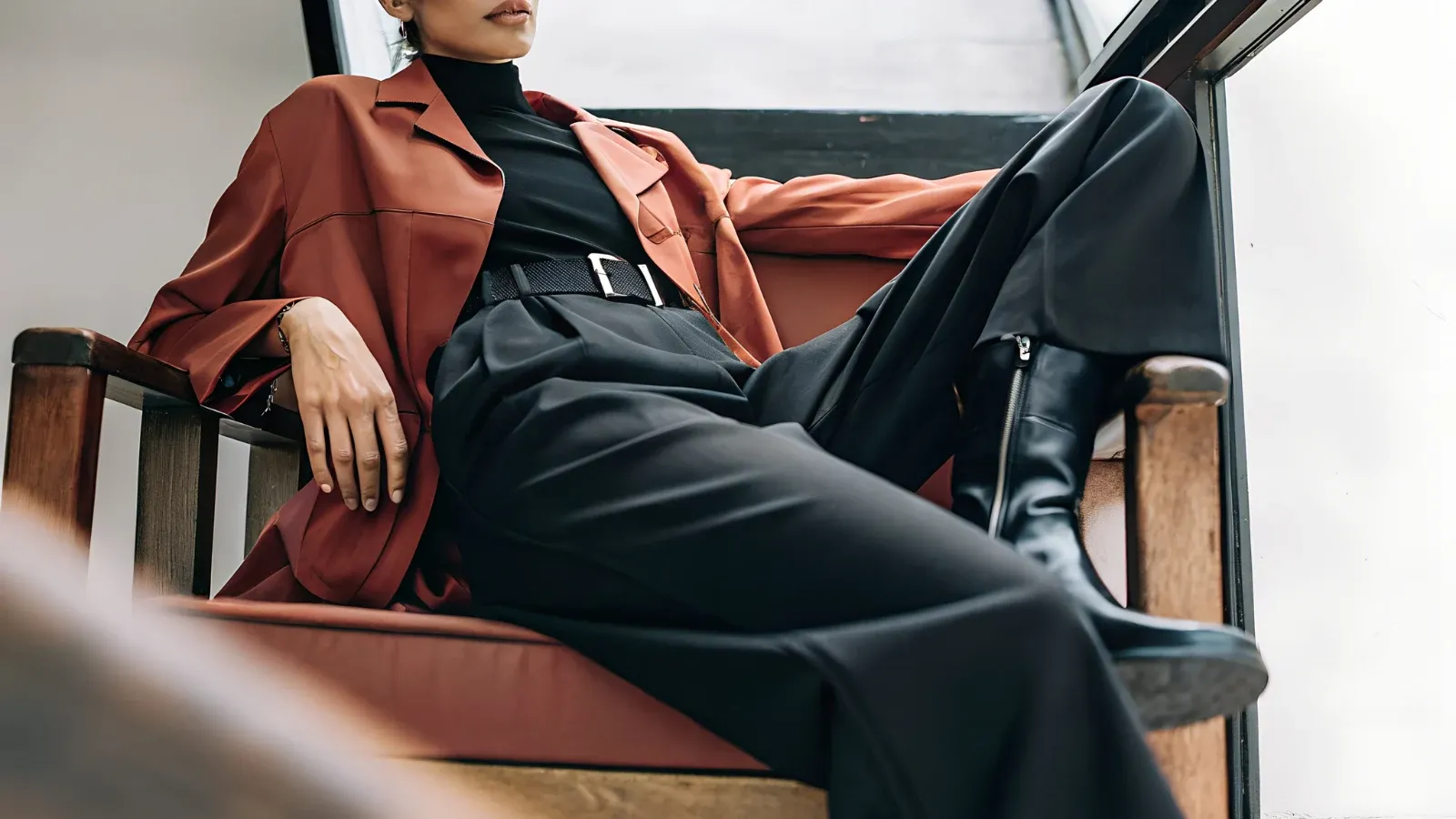
How To Layer When the Weather Is Not Fully There
Because Mother Nature Loves to Keep Us Guessing!
You know that feeling when you check the weather app and it says it'll be 65 degrees, so you dress accordingly, only to step outside and discover it feels like 45 degrees with a wind chill that could freeze your coffee mid-sip? Or when it's supposed to be a crisp fall day, but by lunch time you're peeling off layers because it feels like summer decided to make a surprise comeback?
Welcome to the wonderful world of transitional weather -that frustrating period when the seasons can't make up their minds, and neither can your thermostat. Whether it's the awkward period between winter and spring, summer and fall, or just those random days when the weather seems to have multiple personalities, mastering the art of layering is absolutely essential for any working woman who wants to look polished while staying comfortable.
I learned this lesson the hard way during my first week at a new job in Chicago, some years ago (hello, unpredictable Midwest weather!). I showed up to the office one morning in what I thought was the perfect outfit for a mild spring day, only to spend the entire day either shivering in the overly air-conditioned conference room or sweating through my blazer during outdoor team lunch. That's when I realized that strategic layering isn't just about staying comfortable - it's about being prepared for whatever the day throws at you while maintaining a professional appearance.
Understanding the Art of Strategic Layering
Effective layering for transitional weather isn't just about throwing on multiple pieces and hoping for the best. It's about creating a cohesive look that can be adjusted throughout the day while maintaining your professional appearance. The key is choosing pieces that work both together and separately, so you can add or remove layers without looking like you're wearing a completely different outfit.
Think of layering like creating a beautiful, complex dish -each layer should complement the others, and removing one shouldn't leave you with something that looks incomplete or unappetizing. Your base layer should be able to stand alone if needed, your middle layer should add both warmth and style, and your outer layer should tie everything together while being easily removable.
How To Choose Your Base Layer
Your base layer is the foundation of your entire look, so it needs to be something you'd feel comfortable and confident wearing on its own if you need to shed all your outer layers. This isn't the place for that tissue-thin camisole that you'd never wear without a cardigan - you need something substantial enough to look intentional and polished.
For Corporate Environments
A well-fitted blouse in a classic style is your best friend. Choose one in a breathable fabric like cotton or a cotton blend that won't show sweat if the day heats up unexpectedly. A crisp white button-down is always a safe choice, but don't be afraid to try soft pastels or muted prints that work within your office dress code.
For Creative or Casual Environments
You have more flexibility here. A fitted sweater, a sleek turtleneck, or even a polished t-shirt in a premium fabric can work beautifully as a base layer. The key is choosing something that looks intentional rather than like an afterthought.
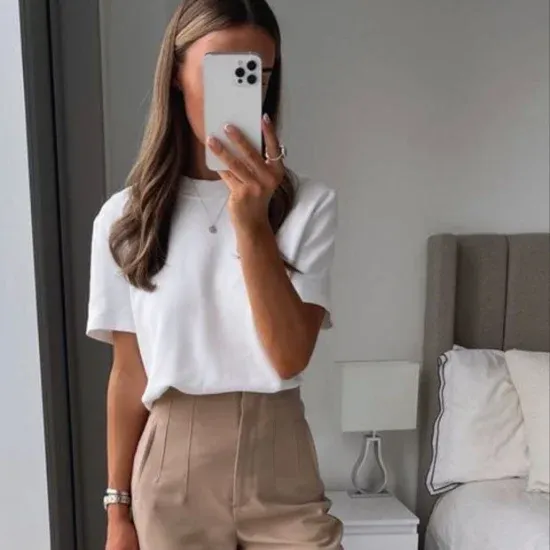
Source: Karelle
Fabric Considerations
Natural fibers and natural blends are your friends when it comes to temperature regulation. Cotton, silk, wool blends, and bamboo fabrics tend to breathe better than synthetic materials, which can trap heat and moisture. However, some high-quality synthetic blends are designed specifically for temperature regulation and can be excellent choices.
The Middle Layer Power
This is where you can really showcase your personal style while adding functional warmth. Your middle layer should be something that looks polished enough to wear in meetings but easy enough to remove if you get too warm.
The Perfect Cardigan
A well-fitted cardigan is perhaps the most versatile middle layer you can own. Choose one in a neutral color that coordinates with most of your work wardrobe. Look for styles with clean lines - avoid overly chunky knits or busy patterns that might look too casual for your work environment.
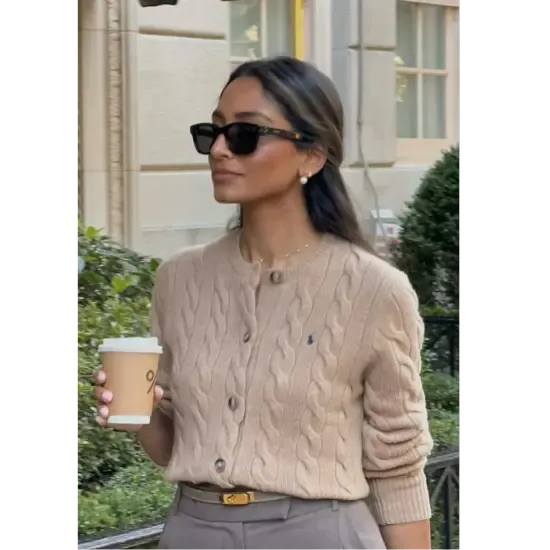
Source: Javelle
Blazers and Light Jackets
A lightweight blazer or unstructured jacket can serve as an excellent middle layer. Choose something in a breathable fabric that won't wrinkle easily when you need to carry it around. Ponte blazers are particularly good for this purpose as they're comfortable, packable, and always look polished.
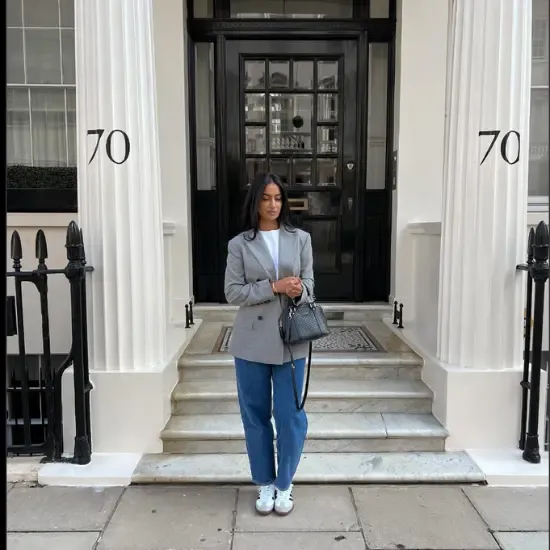
Source: kaveeta
Vests and Sleeveless Options
A tailored vest can add warmth and sophistication without the bulk of sleeves. This is particularly useful when you're in and out of heated buildings or dealing with varying indoor temperatures throughout the day.

Source: sveta mit
Sweater Strategy
If you choose a sweater as your middle layer, opt for something in a lightweight fabric that won't add too much bulk under an outer layer. Merino wool, cashmere blends, or high-quality cotton knits work beautifully.
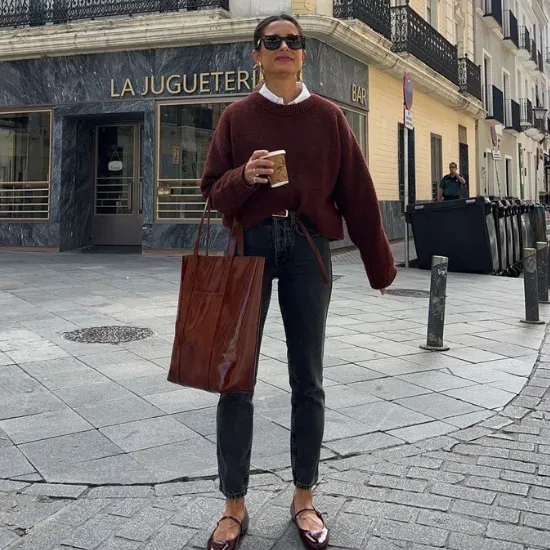
Source: Lisa Coyle
The Outer Layer: Your Weather Defense
Your outer layer needs to be your protection against the elements while still looking professional. This is often the first thing people see, so it needs to make a good impression while being functional enough to keep you comfortable.
The Classic Trench Coat
Nothing beats a well-fitted trench coat for transitional weather. It's professional, timeless, and provides excellent protection against both wind and light rain. Choose one in a neutral color like khaki, navy, or black that coordinates with your work wardrobe.
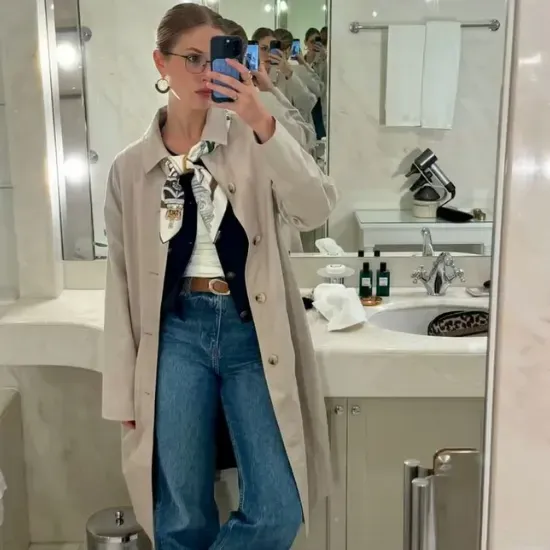
Source: isabelleheikens
Modern Bomber or Utility Jackets
Depending on your work environment, a sleek bomber jacket or tailored utility jacket can be an excellent outer layer. Choose styles in neutral colors and avoid anything too casual or sporty for conservative offices.
How To Master the Layering Formula
The most successful layering follows a simple formula: Base + Middle + Outer = Cohesive Look. But within that formula, there are several strategies that can help you create more interesting and functional combinations.
The Thin-to-Thick Rule
Generally, you want to layer from thinnest to thickest. Your base layer should be the most fitted, your middle layer slightly looser, and your outer layer the roomiest. This prevents that bulky, stuffed-sausage look that can happen when you try to squeeze too many thick layers together.
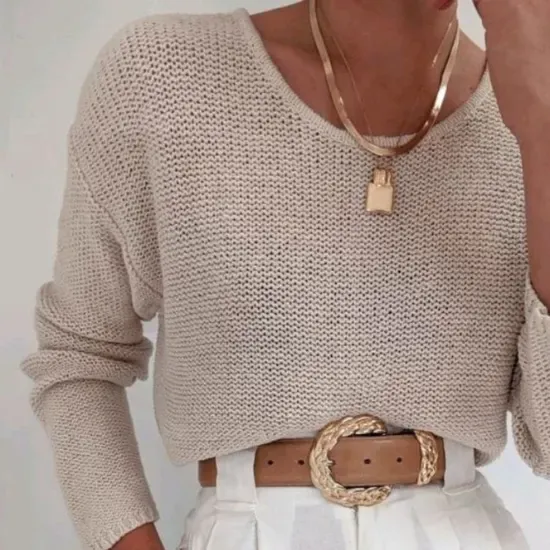
Source: Giulia Guglielmi
Color Coordination Strategy
When layering multiple pieces, stick to a cohesive color palette. This doesn't mean everything needs to be the same color, but the pieces should work harmoniously together. A good rule of thumb is to use different shades of the same color family, or to stick to neutrals with one accent color.
Texture Play
Mixing textures can add visual interest to your layered look while serving practical purposes. For example, pairing a smooth silk blouse with a textured cardigan and a sleek outer coat creates a sophisticated contrast that's more interesting than wearing all smooth or all textured pieces.
Accessories That Make Layering Easier
Scarves
A lightweight scarf can be the perfect layering accessory. It adds warmth around your neck and can be easily removed or adjusted throughout the day. Choose styles that can be worn multiple ways - around your neck, over your shoulders, or even tied to your bag when not needed.
Statement Jewelry
When you're wearing multiple layers, accessories become even more important for defining your personal style. A statement necklace can pull together a simple layered look, while interesting earrings can add personality when your neckline is covered by layers.
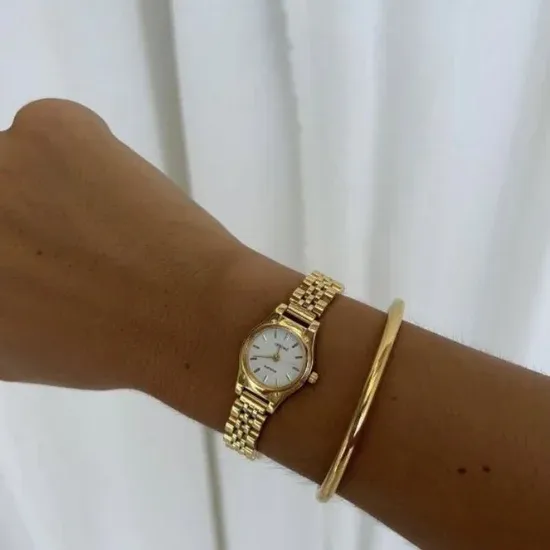
Source: madisondorunda
Bags That Work
Choose a bag that's substantial enough to hold layers you might remove during the day. A tote bag or satchel with interior pockets can help you stay organized when you're carrying around cardigans or scarves.
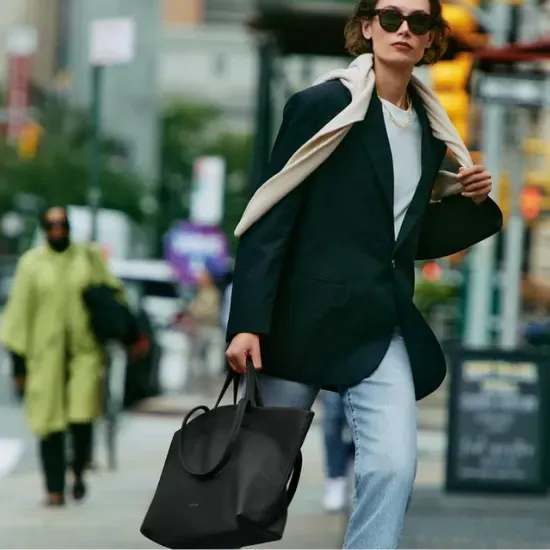
Source: CUYANA
Common Layering Mistakes to Avoid
Over-Layering: More isn't always better. Aim for 2-3 well-chosen layers rather than piling on multiple pieces that don't work well together.
Ignoring Proportions: Make sure your layers create a flattering silhouette. If you're wearing a loose cardigan, pair it with more fitted pieces underneath. If your base layer is flowy, add structure with your middle or outer layer.
Forgetting About Removal: Always consider what you'll look like when you need to remove layers. Make sure each layer looks intentional on its own.
Choosing the Wrong Fabrics: Avoid fabrics that don't breathe well or that wrinkle easily when layered. You don't want to spend your day uncomfortable or constantly smoothing out wrinkles.
Mastering the art of layering for unpredictable weather is really about being prepared for anything while maintaining your professional image. When you have a solid layering strategy, you can face any weather curveball with confidence, knowing that you'll be comfortable and appropriately dressed no matter what the day brings.
The best layering strategy is one that works for your specific lifestyle, climate, and work environment. Experiment with different combinations on weekends or less important workdays until you find your go-to formulas. Once you've mastered the art of strategic layering, you'll never again have to choose between looking professional and feeling comfortable - you can absolutely have both.
The key is building a wardrobe of pieces that work well together and being thoughtful about how you combine them. With a little practice and the right pieces, you'll be prepared for whatever weather surprises come your way while always looking polished and put-together.






